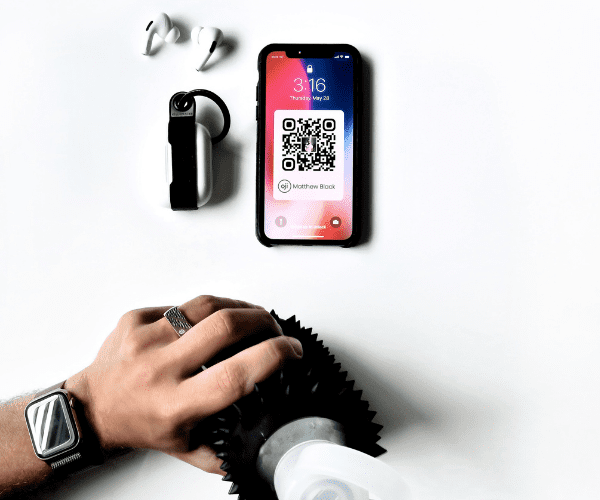What do Angry Birds, Rickrolling, and Harlem Shake videos have in common? All these things are, like, so mid-2010s. But so are QR codes. However, unlike those three short-lived, obscure internet fads, QR codes are making a comeback (although the truth is they never left!).
Here we are at the end of 2020—and you’ve probably noticed QR codes creeping back into fashion. Maybe you’ve recently used Spotify Codes to quickly share or access your new favorite song. Or perhaps you scanned a menu at a local takeout place to pull-up a contactless menu during the COVID-19 pandemic. Regardless, there’s a chance you’re akin to the 32% of recent survey respondents who said they had scanned a code in the last week.
So, why are QR codes making a comeback? And why are they suddenly the next big thing in marketing, despite being a relatively old technology? Put simply, QR codes can easily be used in marketing campaigns to bridge the digital and physical worlds.
What is a QR code?
QR (or quick release) codes are similar to good, old-fashioned barcodes. They’re basically a two-dimensional barcode. A barcode scanner interprets the black and white elements of a barcode by illuminating the code with a red light. QR codes work similarly—but with the convenience of a cellphone. While a barcode tells a business about a product, a QR code can create a bridge between the offline world and the online: They can be an easy way to:
- Schedule appointments and meetings
- Check out new music from your favorite artists
- Or order your favorite burger to beat the line
QR codes were originally introduced as an alternative to barcodes. The creation of QR codes can be traced back to 1994, when a Toyota subsidiary called Denso Wave designed them to improve the manufacturing process. Fast forward a decade or so, and the technology saw widespread adoption. While first used in automobile, pharma, and retail industries to track inventory, social media companies and marketers adopted them to reach consumers.
Believe it or not, QR codes were ahead of their time.
While the technology was nothing short of innovative when introduced, prior to the mass production of smartphone cameras, QR codes just didn’t catch on. They even became the butt of marketing jokes. However, the ubiquity of smartphones and the spread of digital content has all but changed the public perception of QR codes and how frequently they get scanned.
Modern smartphones now have integrated code readers that make it possible for consumers to engage with content on the fly. And the Apple iOS 11 update in 2017 introduced native support for QR codes through its Camera app, which only increased adoption. Finally, Google’s announcement of mobile-first indexing in 2016 placed an emphasis on mobile content for indexing and ranking purposes.
This has created a catalyst for QR code marketing. Now, brands who understand their customer’s journey can use QR codes to engage the right people, at the right time, by helping to move them towards the desired outcome. In fact, that’s something Google has preached for years. These micro-moments that influence decisions have been thought of in a linear fashion: on mobile or on desktop. New opportunities now are emerging to connect with the screens around you—and that connection builds familiarity, affinity, and customer loyalty.
So, how can brands make the most of QR code marketing?
Customers are already using their smartphones to look up information about your company. QR codes give them a chance to engage even deeper with your brand. They meet your customers where they are and bring them to where you want them. This means moving customers closer to you, in the moments that matter to them. It’s as straightforward as it comes.
QR codes empower companies to connect the physical and digital worlds, making it as easy as taking a selfie. And from integrating a code into your logo, or designing a code to match your visual guidelines, QR codes can help provide cohesive brand experiences. But they can also serve as a measurable, trackable extension of your existing marketing campaigns.
Incorporating dynamic QR codes into out-of-home ad campaigns—on formats like posters, flyers, and digital screens—enables brands to solve problems. Metrics like number of scans, location, operating device, and time scanned, create insights for your team to optimize your next campaign. These real-life metrics help you test which pieces of content resonate best with your users. Pretty good for technology that’s nearly thirty-years-old, right?
Download the QR Code Marketing eBook about adding value to the customer journey thru the use of QR Codes.
